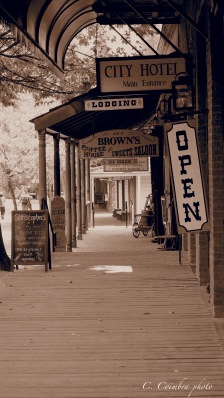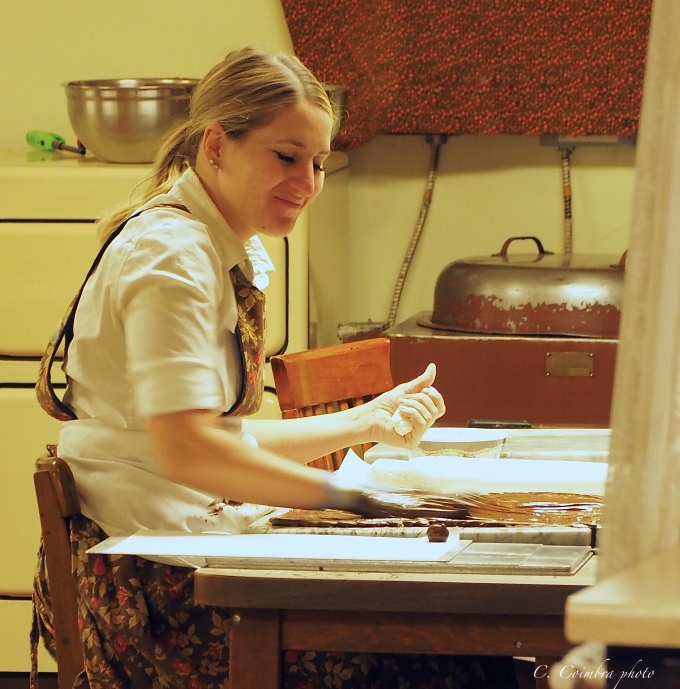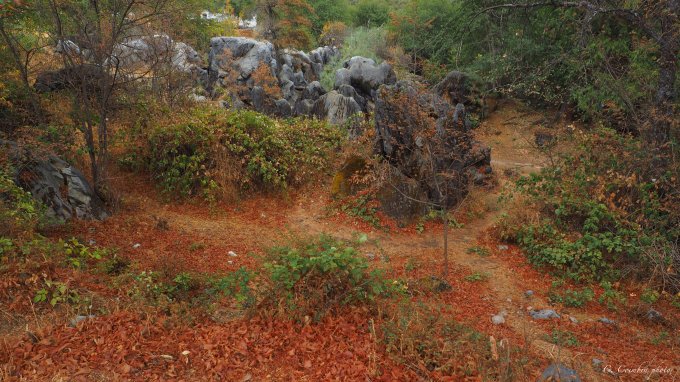
The last time I visited California’s Gold Rush country I worked full time as both a newspaper reporter/photographer and a freelance writer. When I visited Columbia, a 19th century mining town just off of California State Route 49, I caught whiff of a sweet smell and a sweet story— the Columbia Candy Kitchen. My newspaper loved the story and so did the LA Times and a now- defunct travel magazine. That was about 40 years back. So, on my return visit this fall I had to see if the candy shop remained. It does. And so does Columbia’s pay dirt history.
 I’m an off-season, weekday traveler, and this visit to Columbia, a state historic park, was void of tourists, but somewhat busy with school field trips. Not every shop was open, but the doors to saloons and eateries and other tourist-friendly businesses were unlocked and welcoming.
I’m an off-season, weekday traveler, and this visit to Columbia, a state historic park, was void of tourists, but somewhat busy with school field trips. Not every shop was open, but the doors to saloons and eateries and other tourist-friendly businesses were unlocked and welcoming.
Of the hundreds of Gold Rush mining camps and towns that sprung up between the Gold Rush years of 1848 and 1855, Columbia survived the boom, the bust, the fires, and the lawlessness, possibly because of the introduction of hydraulic mining developed in 1853. Leave it to the search for wealth to utterly transform the natural history, ecology and topography of a region.
What makes Columbia a bit different is its history of hydraulic mining. The state historic park website explains, “Located in the heart of the Mother Lode, a mile wide network of gold bearing quartz that extends 120 miles along the western edge of the Sierra Nevada, from Mariposa northward to Georgetown, Columbia yielded $87 million in gold at 1860’s prices.” In today’s money that would be $2,646,047,349.40.

“Using literally thousands of miles of flumes, canals and penstocks, they (miners) delivered water to the mines on the mountain tops, and using giant nozzles (called monitors) they blasted the cliff with stream of high pressure water. They had (re)invented hydraulic mining, one of the most destructive human activities to ever affect the Sierra Nevada and adjacent Central Valley,” writes professor of earth sciences, Garry Hayes.

While wandering about the bare rocks that were once beneath the surface, I couldn’t help but imagine what the region must have looked like before gold fever prompted the largest mass migration in American history, bringing about 300,000 people to California. The Gold Rush left behind a diversity of people and cultures that negatively impacted the native peoples, but at the same time created California’s compendium of people from Asia, Europe, Latin America, Islanders and Australians.
It’s these strands of history woven together that draws Gilda, her driver and passenger along two-lane roads that sweeten life like a visit to the Columbia Candy Kitchen.




Tips on Traveling California State Route 49
Named after the 49ers of the 1849 Gold Rush era, California State Route 49 runs north-south along the Sierra Nevada foothills. There are innumerable historic sites along the road. The original towns of the era remain, and are filled with charm. However, to our personal surprise, there are several turns in the road that now bypass some of the older towns. Keep your eyes wide open, do not listen to high-tech electronic mapping, and stick to “Old 49,” for the full grasp of a roll through California history.
There are innumerable historic sites along the road. The original towns of the era remain, and are filled with charm. However, to our personal surprise, there are several turns in the road that now bypass some of the older towns.
LikeLike